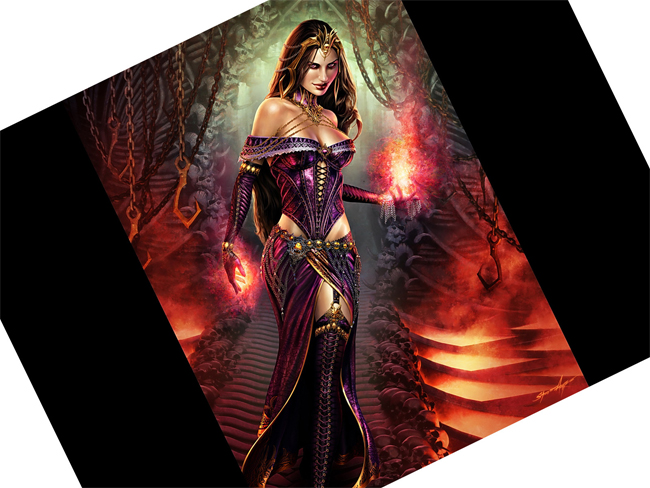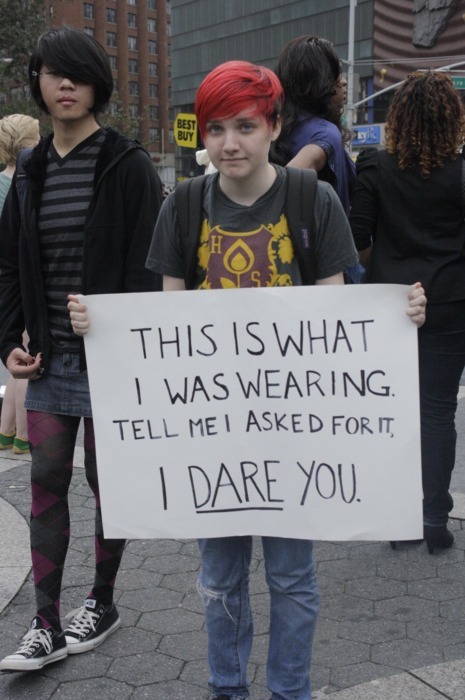Objectification is, by strict definition, the treatment of a person as solely a physical object rather than a sentient and emotional being. So, when the subject of how females were objectified in Magic art was mentioned a group of scholars had a brilliant, earth-shattering, and novel idea that they all rushed to post (followed by these rogue academics patting themselves on the back): MALES ARE OBJECTIFIED IN MAGIC ART TOO (so brave!). While these posters are technically correct (the best kind of correct), they miss the real point of what is being referred to when one makes reference to objectification: the transformation of a sentient being to a solely physical object to be used.
Let's look at what "male objectification" (it cracked me up a bit just writing that, sorry) looks like:
"Holy shit, he has no shirt!"
"omg, look at those muscles!"
"That guy is ripped! I'm jealous"
The fact that this piece of "art" (cracked up again, sorry) brings a deluge of homoerotic thoughts to sheltered neckbeards everywhere is a clear sign that it's an example of male objectification: the transformation of a powerful male into a purely sexual object. Except it's not actually happening and is just a completely surface/trivial analysis. If we actually examine the piece we see that Koth is in fact a symbol of power, agency, and confronts/challenges the viewer. Koth is displayed not as an object for use, but as another type of object -- a monument to be in awe of and admire.
Let's take a non-Magic look at something people claim is "male objectification" (at least writing this is keeping me amused) - underwear models:
Alright, so once again we have a not fully dressed male. That means he's a sexual object/pin-up, QED! Except, like Koth, his sexuality is used to create an image of power, another monument to the male form. His pose which is seemingly relaxed is not one of acceptance/submission, but instead chosen to highlight his physical power. His glance is once again a challenge to the viewer, asking not "what would you do to me?" but "what would you let me do to you?"
Now, let's compare these images to how a female planeswalker is portrayed, we'll use Argyle's Liliana of the Veil as an example (we're going to use the full art since we can get rid of the ridiculous tilt on the actual card, stealing this from Jesse's article mentioned in the intro):
The depiction of Liliana is very different than that of Koth. The first thing that needs to be taken into account is the social context in how the images are viewed (for a more in-depth take on this, I suggest everyone reads Laura Mulvey's "Visual Pleasure and Narrative Cinema", I took way too many Art History/Cinema Studies classes in college. You can find some easy to digest sparknotes of it here). Western society has historically given and still gives the majority of power to the male portion of its population and continually victimizes and oppresses women (if you don't think this is true, listen to a discussion about rape or birth control)
Therefore the "male gaze" (a term first introduced in the aforementioned Mulvey essay), when given a historical perspective, is one that depends on the political, economic, and sexual oppression of women.
Liliana's state of undress is also in contrast to Koth's. While Koth has no shirt to show power (watch any action movie that involves a fighting scene, the male actors involved almost always remove their top to highlight their physical prowess), Liliana's strategic lack of clothing highlights her as a sexual being, emphasizing her shoulders, cleavage, hips, and upper leg.
On top of this Liliana's gaze which is not presented as challenging the viewer (like Koth's), but is instead presented as inviting. It is no mistake that Liliana is pictured in front of what appears to be a secret lair which you, presumably, want to take her up to. Comparing Liliana to some Goth pin-ups confirms the objectification present in Argyle's illustration
Anyone claiming that the objectification of Koth/male models is equivalent to the objectification of Liliana is just choosing to ignore that in the male case Koth is objectified to be a monument while in the female case Liliana is objectified to be another type of figure - a toy.
-Chris Mascioli
@dieplstks on twitter





The art you selected here for Liliana is not the art actually used on the card. Those leg bits are all covered up, as well as the hips.
ReplyDeleteFurther, while I don't deny the existence of objectification of women, the picture is fitting for liliana as a character. She made a deal for immortality and life long beauty that she uses to seduce her prey. While most players don't know or care about the story line, i think sexual artwork has its place, and in this particular case of liliana it is a weapon, not an invitation to "do with her as you please". Even without the story line, the actual card art definitely gives me the vibe of, "I'm a bad ass bitch, i dare you to make a comment about my body." I mean she's holding glowing magical fire that will likely kill me.
ReplyDeleteI just really don't see the toy part. been looking at both arts of liliana now, yes, she's sexy, but not 'toy-like' or submissive. Again, your over all points I agree with, but I think you're doing a disservice to whatever message you're trying to send by using an example that doesn't reflect what you're saying.
DeleteThe Liliana art you use here and the art on the card are actually two different pieces. While the card art isn't all that much better, I do feel it is somewhat dishonest to treat them as one and the same.
ReplyDeleteThat being said, you make your points well despite your condescending tone.
You could use the same argument with the Reversal of Fortune art, though.
ReplyDelete